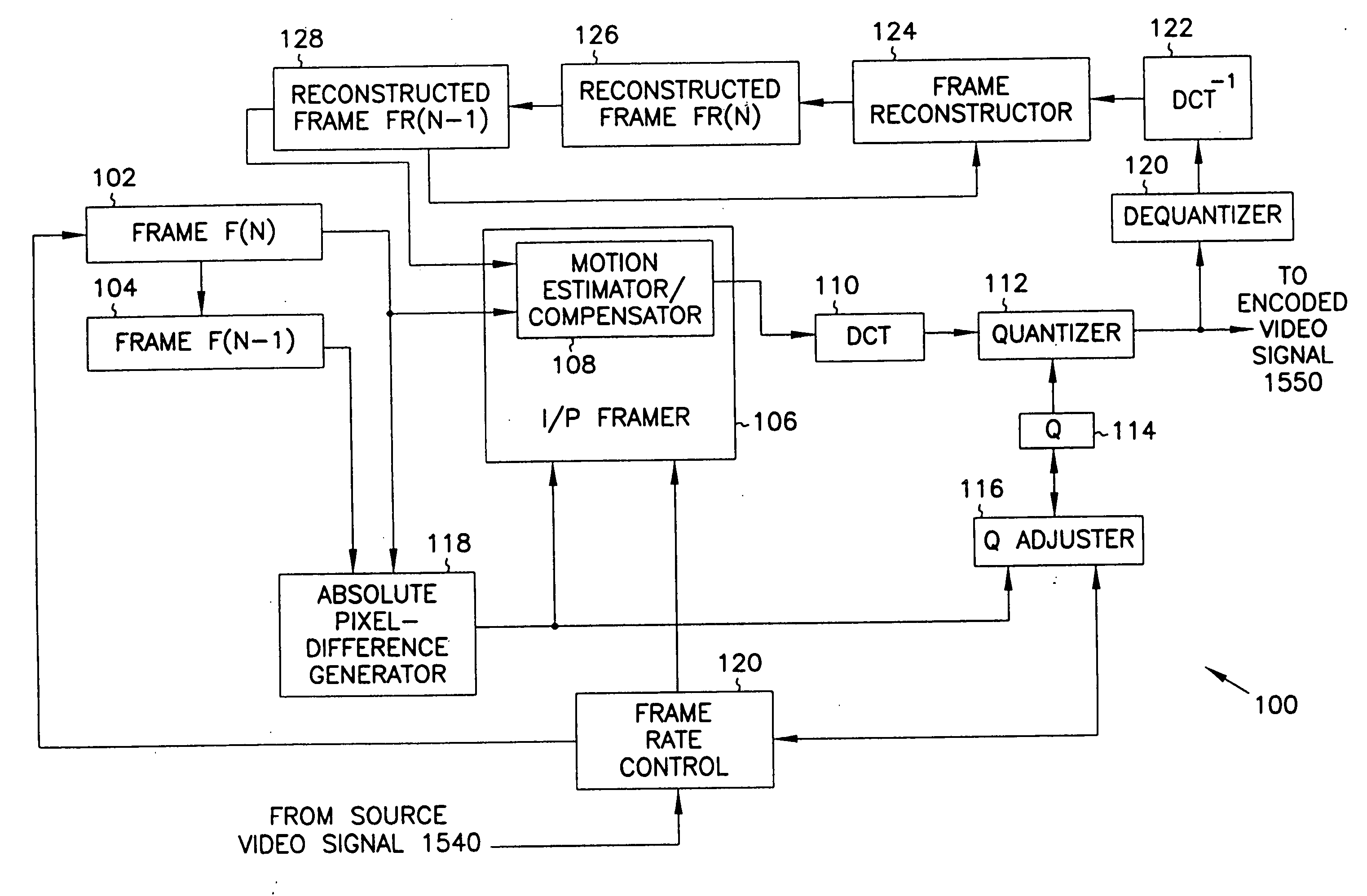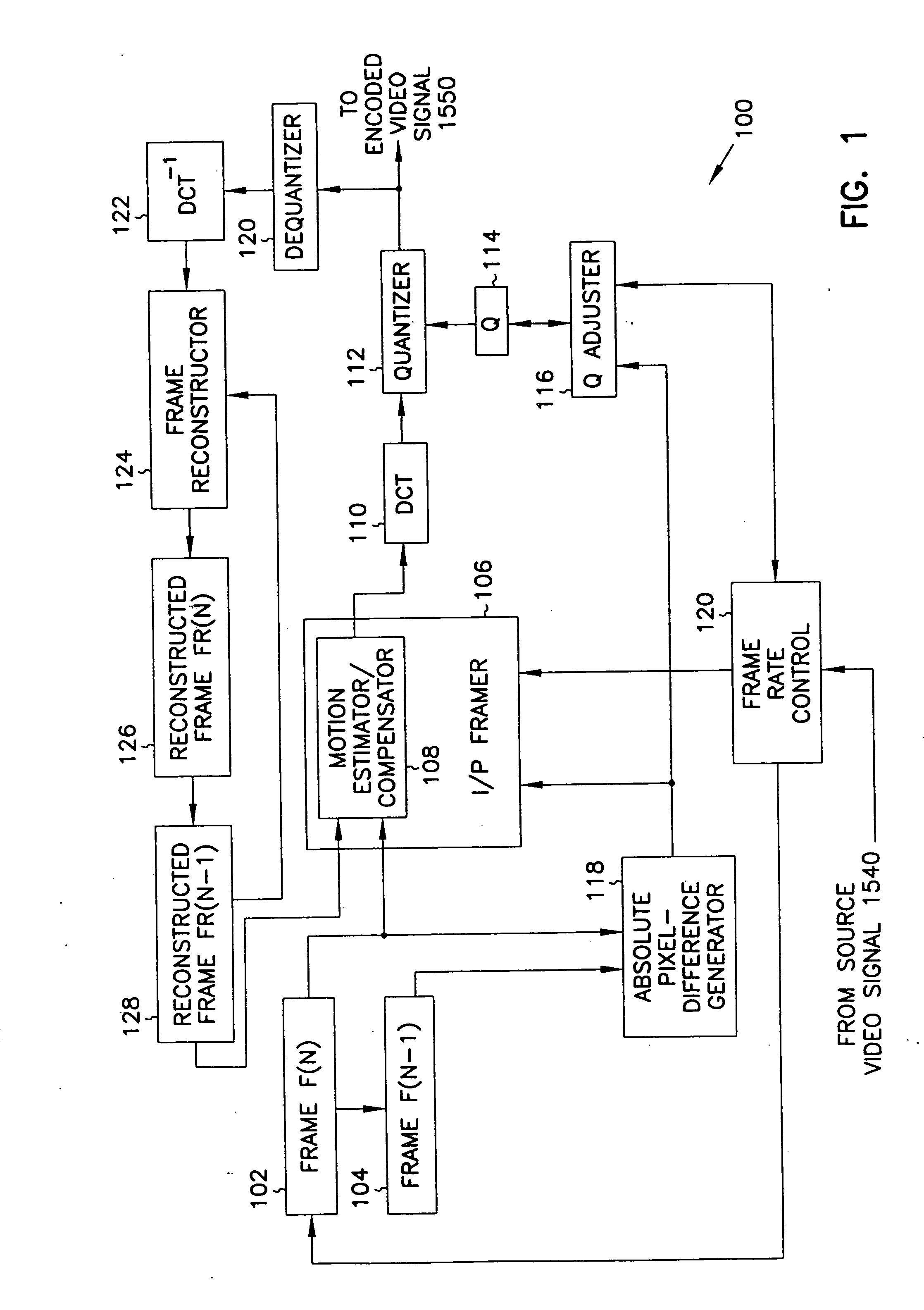Digital video signal encoder and encoding method
a digital video and encoder technology, applied in signal generators with optical-mechanical scanning, color televisions with bandwidth reduction, etc., can solve the problems of thwarting the gradual trend of primary open loop rate control which allows available bandwidth to accumulate or be exceeded, and the reserve available bandwidth is persistently dwindling, so as to improve the quality of motion video images and exceed available bandwidth.
- Summary
- Abstract
- Description
- Claims
- Application Information
AI Technical Summary
Benefits of technology
Problems solved by technology
Method used
Image
Examples
Embodiment Construction
[0030] In accordance with the present invention, a video signal encoder 100 (FIG. 1) maximizes image quality without exceeding bandwidth available for transmitting the encoded motion video signal. Video signal encoder 100 receives a frame of a video signal from a video source (not shown in FIG. 1) which can include, for example, a video camera, a video cassette player, a video laser disk player, or similar video source. Video signal encoder 100 stores the frame in buffer 102 after moving any frame previously stored in buffer 102 into buffer 104. Thus, video signal encoder 100 stores two consecutive frames in buffers 102 and 104. The frame stored in buffer 102 is sometimes referred to herein as the current frame, and the frame stored in buffer 104 is sometimes referred to herein as the previous frame. I / P framer 106 of video signal encoder 100 includes a motion estimator / compensator 108 which retrieves the current frame from buffer 102 and a reconstructed previous frame from a buffer...
PUM
 Login to View More
Login to View More Abstract
Description
Claims
Application Information
 Login to View More
Login to View More - R&D
- Intellectual Property
- Life Sciences
- Materials
- Tech Scout
- Unparalleled Data Quality
- Higher Quality Content
- 60% Fewer Hallucinations
Browse by: Latest US Patents, China's latest patents, Technical Efficacy Thesaurus, Application Domain, Technology Topic, Popular Technical Reports.
© 2025 PatSnap. All rights reserved.Legal|Privacy policy|Modern Slavery Act Transparency Statement|Sitemap|About US| Contact US: help@patsnap.com



